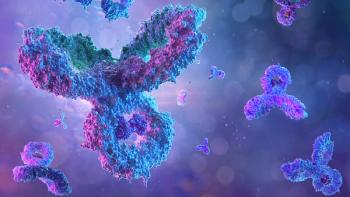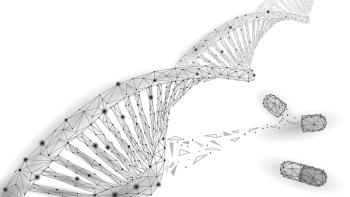
Personalized CRISPR Therapy Successfully Treats Infant With Rare, Incurable CPS1 Deficiency
A pediatric patient with a rare genetic disorder safely received a personalized CRISPR therapy, marking the first known case of a personalized CRISPR-based medicine administered to a single patient.
A personalized gene-editing therapy was safely delivered to an infant with a life-threatening, incurable genetic disease, explained
CPS1 is a rare disorder in the family of urea cycle disorders (UCDs) that results in excessive accumulation of nitrogen, in the form of ammonia, in the blood (2). Symptoms include vomiting, worsening lethargy, refusal to eat, and coma.
A First for CRISPR
Led by Dr Musunuru, at team of researchers from the Perelman School of Medicine at the University of Pennsylvania (UPenn) and the Children’s Hospital of Philadelphia (CHOP) developed the custom treatment using clustered regularly interspaced short palindromic repeats (
“We were very concerned when the baby got sick, but the baby just shrugged the illness off,” said Dr Musunuru (1). Indeed, the baby’s disorder de-escalated from severe to mild, enabling the toleration of a more protein-rich diet. Support was provided by
Safe & Effective
“We knew the method used to deliver the gene-editing machinery to the baby’s liver cells allowed us to give the treatment repeatedly,” said CHOP pediatrician and study co-author Rebecca Ahrens-Nicklas, MD, PhD (1). “That meant we could start with a low dose that we were sure was safe.”
Indeed, the team observed indications of therapy effectiveness following the initial dose, when the six-month-old was able to eat more protein and anti-UCD medications could be safely reduced. Additionally, the baby was able to battle a cold and, later, a gastrointestinal infection, both of which would normally be incredibly dangerous for patients with CPS1.
“As a platform, gene editing—built on reusable components and rapid customization—promises a new era of precision medicine for hundreds of rare diseases, bringing life-changing therapies to patients when timing matters most: Early, fast, and tailored to the individual,” noted Joni L. Rutter, PhD, director of the
Though promising, Dr. Musunuru and colleagues note in NEJM that “longer follow-up is warranted to assess safety and efficacy” (3).
Key Takeaways
This is a watershed moment for drug and biopharma manufacturing scientists, indicating a shift toward:
- Precision, patient-specific treatments.
- Agile, modular, and responsive manufacturing models.
- A broader pipeline of ultra-rare disease therapies, backed by a reusable and adaptable gene editing platform.
It’s a call to prepare for a future where treatments are not only biologically engineered but custom-built for individuals, potentially redefining how medicine is manufactured, regulated, and delivered.
Access all our
References:
- NIH.
Infant with rare, incurable disease is first to successfully receive personalized gene therapy treatment . Press release. May 15, 2025. - National Organization of Rare Disorders.
Carbamoyl Phosphate Synthetase 1 Deficiency . Accessed May 16, 2025. - Musunuru K, Grandinette S, Wang X, et al.
Patient-Specific In Vivo Gene Editing to Treat a Rare Genetic Disease . N Engl J Med. 2025, May 15. [Online ahead of print].
Newsletter
Stay at the forefront of biopharmaceutical innovation—subscribe to BioPharm International for expert insights on drug development, manufacturing, compliance, and more.





